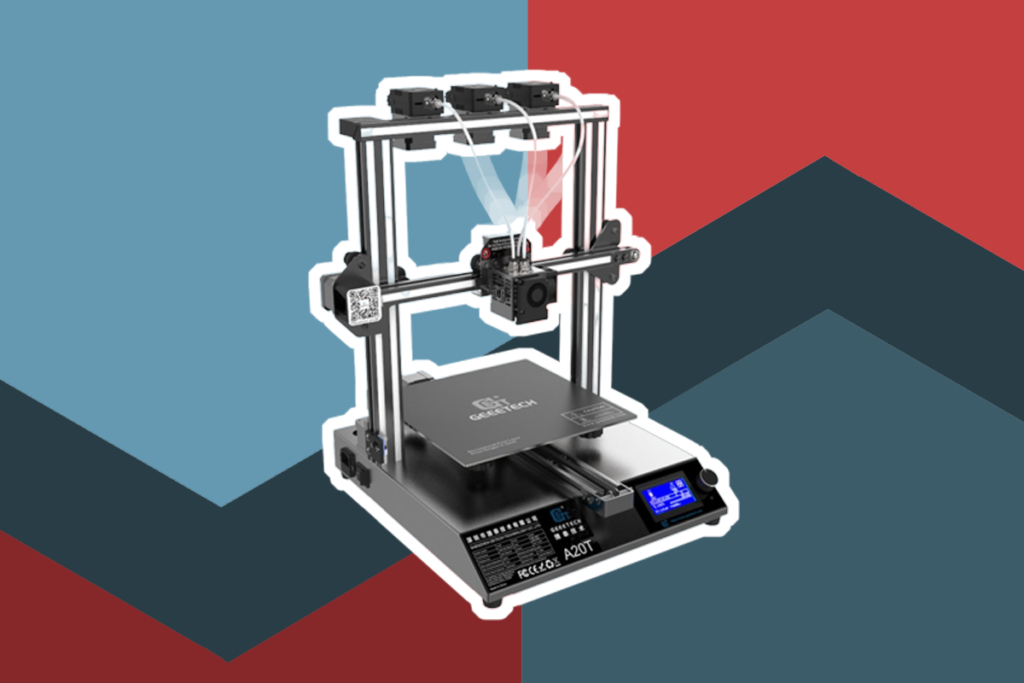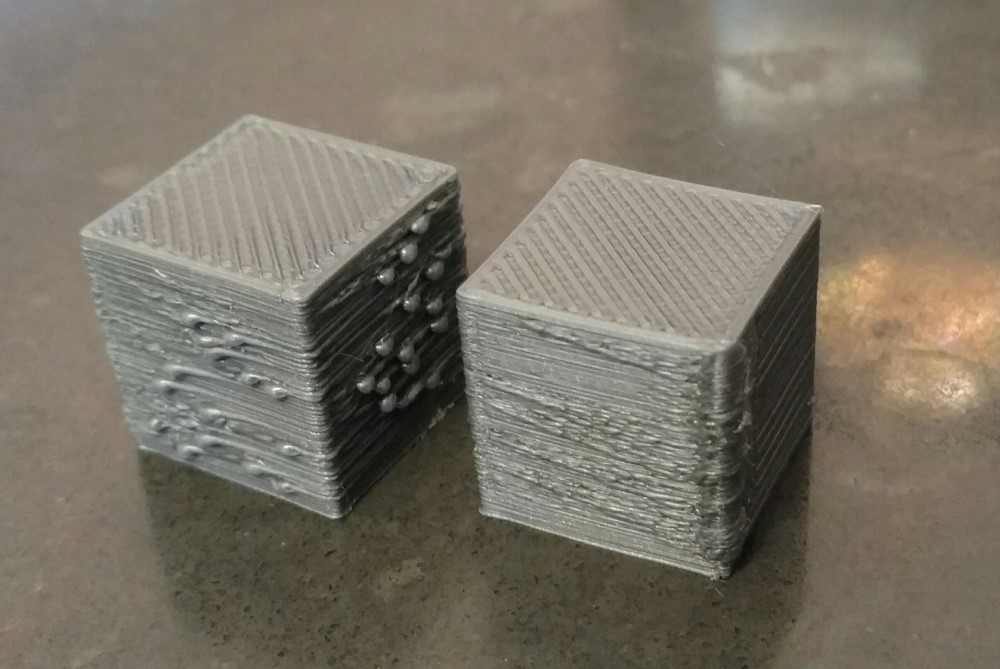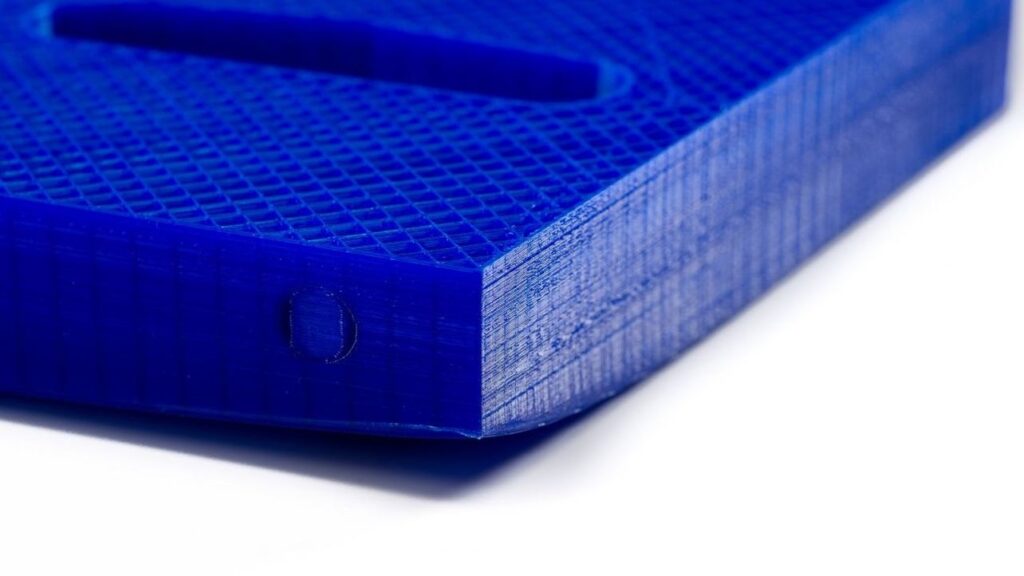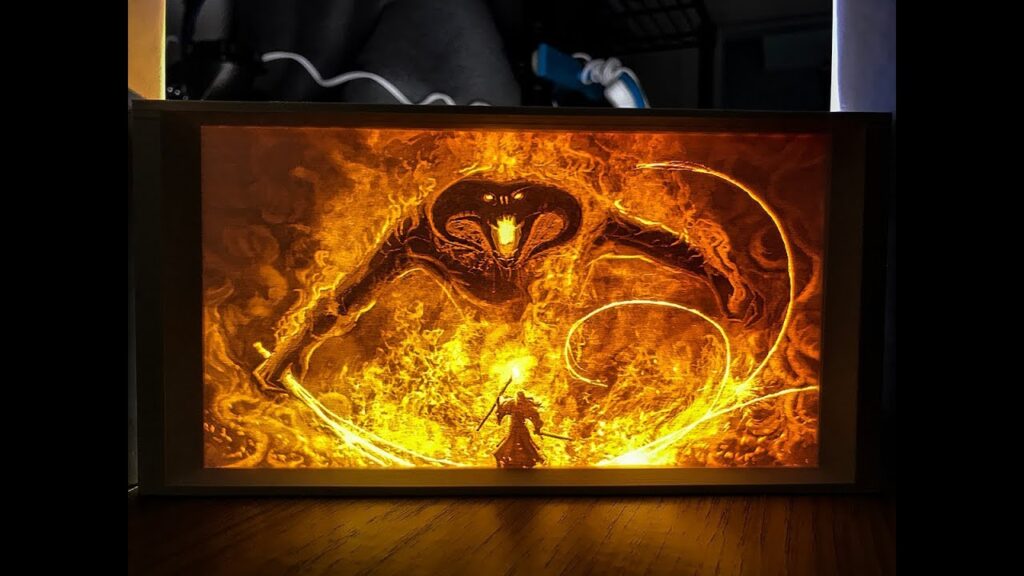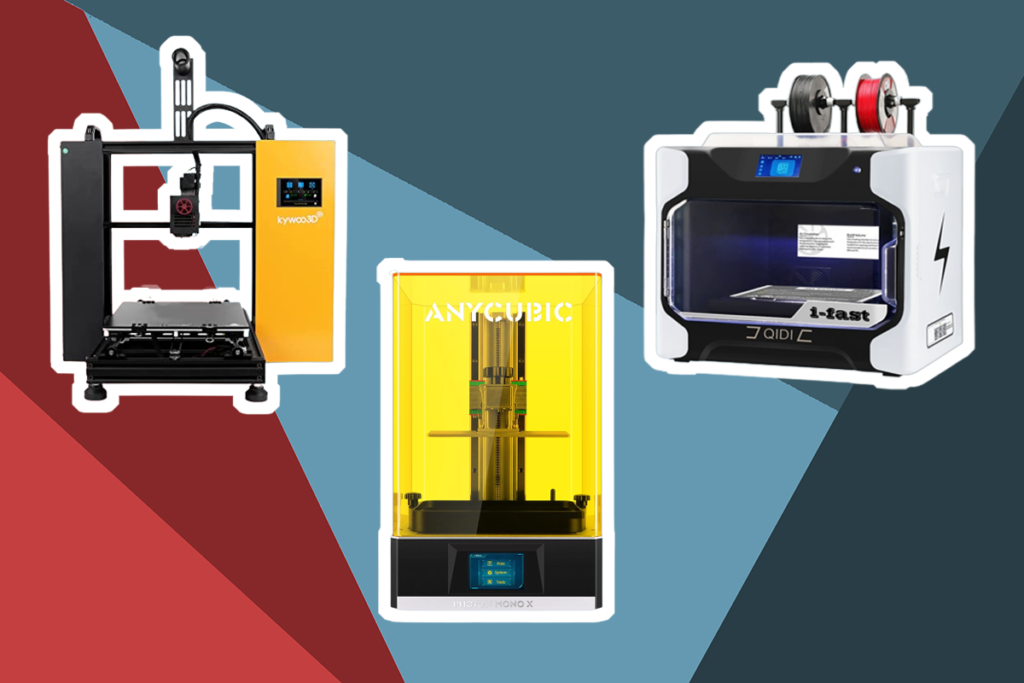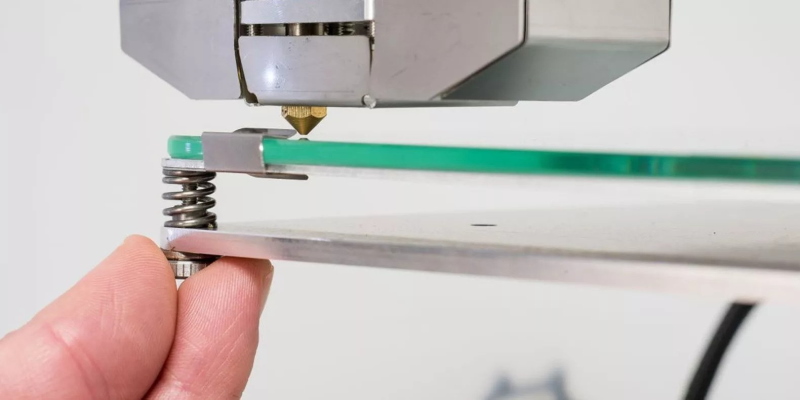

3D printers offer great opportunities for hobbies and one of them is creating mini models for games, entertainment and even architecture. Yet we understand how difficult it is to find the proper printer capable of high-quality printing with sharp edges and clear details.
We have reviewed the best 3D printers for miniatures, taking into account their respective benefits and drawbacks to help you choose the right product for you. For our review, we factored in key features such as the layer resolution for quality, the printing speed, volume and technology for custom output, and the weight and dimensions of the printers.
More features: 405 nm UV-resin printing, LED light source, 8* anti-aliasing, double-linear Z-axis, 8.9-in monochrome display
ELEGOO Saturn MSLA provides decent printing volume of 7.55 x 4.7 x 7.8 inches to print several full-sized objects simultaneously. The surface is sandblasted to strengthen adherence for large 3D prints and the build plate features set screws for stable leveling that reduces the need for frequent calibration. The display is 8.9-inch 4K monochrome LCD with high resolution of 3840 x 2400 pixels which also increases layer printing speed. There is a USB port for transferring files over your Ethernet and a matrix LED light source with 405 nm UV-resin printing. The dual linear Z-axis improves precision in motion for greater accuracy, more detail and a smooth surface.
This is the best 3D printer for figurines with super-vivid detail for board games. The 8-time anti-aliasing has been upgraded with image blur mechanism for smoother and accurate prints.
More features: PLA and PLA PRO compatible, +250°F max extruder temperature, up to 150 mm/sec printing speed
The MP Cadet 3D Printer is a groundbreaking device that redefines your 3D printing experience. With its effortless auto leveling, wireless printing via our user-friendly mobile app, and quick setup guided by an online installation guide (with a QR code right on the printer), the MP Cadet streamlines the 3D printing process. Its compact design ensures it won’t overpower your workspace while delivering outstanding print quality. Experience a new level of creativity and convenience with the MP Cadet – where innovation meets simplicity.
More features: DLP projector, 2.5s/layer printing speed, 15W power, weighs 8.8 lbs
The Anycubic Photon D2 is a state-of-the-art 3D printer designed for precision and efficiency. Unlike LCD 3D machines, it utilizes DLP technology with thousands of mirrors for exceptional printing accuracy, while a double light uniformity algorithm ensures over 92% uniformity and anti-aliasing for stunning details. The D2 is not only durable, with a 20,000-hour lifespan for its DLP projector, but also energy-efficient, consuming just 15W of power and operating quietly at 35 dB. Plus, it offers a 62% larger printing volume compared to its predecessor, the Anycubic Photon Ultra, giving you more creative freedom. Elevate your 3D printing game with the Anycubic Photon D2.
More features: 6.6-inch monochrome LCD screen, 2.8’’ TFT touch-control, 2.09L maximum printing volume, weighs 8.8 lb.
The ANYCUBIC Photon Mono 2 is an upgraded option of the Anycubic Photon Mono 4K. This printer comes with a standout 6.6-inch 4K+ HD screen, showcasing intricate details and making it ideal for miniature models. Its upgraded LighTurbo Matrix light source minimizes imperfections for smoother surfaces. With a larger build volume of 165x143x89mm compared to its predecessor, it suits those needing space-efficient yet larger prints. The laser-engraved platform enhances model adhesion and printing success rates. Photon Workshop 3.0 slicing software simplifies the process with an intuitive UI.
More features: USB, TF Card, USB Stick connectivity, hard printing platform
The Artillery Sidewinder SW-X2 3D Printer is one of the most popular printers on the market due to its ultra-quiet operation. Featuring Direct Drive Extruder technology and a fast heating AC heat bed, this printer is perfect for those who want high-quality prints without sacrificing speed or accuracy. With a built-in thermal runaway protection system, this printer is also one of the safest on the market. Additionally, the Lattice glass’s smooth surface makes filament management a breeze. Finally, the machine’s synchronized dual Z system ensures that your prints are always accurate and stable.
More features: PLY format, glass bed, +212°F max extruder temperature, 0.4 mm nozzle
Creality CR-10 has the highest printing volume among our featured products; 11.8 x 11.8 x 15.75 inches. It features a durable aluminum frame and “Triangle-Slot” wheels for a stable printing platform, a 0.4 mm nozzle and a glass bed with an even surface. The 3D printer for models has decent maximum extruder temperature of +212°F. It is compatible with 1.75mm PLA filaments. Other features include adjustable layer thickness of 0.05 to 0.4mm and maximum printing speed of 200mm/s which is ideal for large-scale projects.
The build space of this model makes it suitable for a wide range of custom projects for hobbyists to create figurines, miniatures and other objects.
More features: +446°F max printing temperature, 45 dB noise level, 2.8-in touchscreen, FDM printing technology
FlashForge Adventurer 3 Lite is compatible with various types of filament such as ABS, PLA, PEARL, metal, or wood. It comes with a detachable nozzle that heats up quickly to 392°F in 50 seconds, an intuitive 2.8-inch touchscreen and FDM printing technology. This is the lite version of Adventurer 3D; unlike the latter, this model does not come with a full roll as well as a web cam for viewing your prints on Ethernet. It would be ideal for small prints for beginners because it has a small printing volume of 5.9 x 5.9 x 5.9 inches.
This 3D printer for models is suitable for offices and classrooms because it operates quietly, generating noise of 45 decibels which is equivalent to a library.
More features: 60 mm/sec printing speed, 2.8-in IPS touchscreen, 8 GB internal memory, +464°F max printing temperature
There are cheap 3D printers for miniatures that cannot detect when the filament is running out. That is not the case with Monoprice Voxel which comes with auto feeding function as well as an integrated sensor that detects low filament levels and pauses printing until you reload filaments. There is also assisted leveling function, and you can adjust the settings on the 2.8-inch IPS touchscreen. Other features include printing speed of 60 mm per second, +464°F max printing temperature, 8 GB internal memory, and a nozzle that you can quickly change in seconds without requiring any tools.
This 3D printer for minis would be an ideal choice if you are creating objects for your hobby, or you are a student who needs a good machine for practice. This is because it has a low volume of 5.9 x 5.9 x 5.9 inches which wouldn’t meet a high 3D printing demand.
More features: resume printing function, 7 in/sec printing speed, +491°F max extruder temperature, 265W power
Creality Ender 3 is a great bargain. It features high 491°F max extruder temperature, an upgraded extruder that limits the chance of a clogged nozzle, 7 in/sec printing speed, and resume printing function in case of power outage. You get these features at a budget-friendly price for such a 3D printer for minis. There are wheels to ease mobility and the branded power supply enables the hot bed to reach 110℃ within 5 minutes.
This is a great printer for introducing children to 3D printing. It is also a suitable choice for students and beginners.
More features: PLA, ABS, TPU, PETG supported materials
The X-Pro 3D Printer from QIDI TECH is one of the most advanced 3D printers for printing miniatures, education, and design hobby printing. It has a 4.3′ touch screen with conditional breakpoint printing for more effortless and more competent operation. Its 6mm aviation-grade aluminum platform is resistant to high temperatures and is durable and heat-resistant up to 120°C. As a result, it can accommodate a wide range of filaments thanks to its ability to be heated to 120°C.
The printer’s design upgrades also include a detachable curved metal plate that makes building the end-product easy. It may be used repeatedly, and its mobile nature minimizes offsets or damages to the build plate. The support rod is extended from 10 mm to 12 mm, with improved components including a mechanical structure, engine, and motherboard to ensure more reliable printing.
The printer’s PBP function also keeps track of the breaking point, while its PBF feature protects against power failure and ensures that no jobs are double-printed. Still, the printer has a power-breaking point function to save you from having to remember it. This mechanism is convenient when there’s a power outage or big projects that can’t all be completed in one printing session.
The QIDI Print slicer program is simple to use. It may also be customized to match your time and quality standards. If the in-built version of Simplify 3D doesn’t meet your 3D printing demands, the equipment is compatible with it. Their one-to-one QIDI TECH customer service and a complimentary one-year warranty give assurance in terms of quality.
More features: lightweight design, 90% pre-assembled construction
If you’re looking for a small, lightweight, and easy-to-use 3D printer for beginners, the Creality 3D Mini FDM 3D Printer is a great option. With a printing size of only 6.5 x 6.5 x 7 inches, it’s perfect for students or anyone who loves science and invention. It also weighs just 4.65 kg, making it super easy to move around. Plus, it comes with an easy-to-carry handle. The cantilever structure design offers a lightweight and stable printing experience, while the built-in power supply increases safety and reduces installation worries. And if there’s ever a power failure, the resume printing function automatically saves your content so you can pick up where you left off. So why wait? Get your Creality 3D Mini FDM 3D Printer today!
We have recommended the best 3D printers for making miniatures and models such as figurines and D&D. We have included SLA Resin and FDM models. In this section, we will discuss the features that should guide you when choosing the best 3D printer for miniatures. You will also learn how to clean your printer and how to scale 3D prints for miniatures.
A great way to calculate the size of a figurine is to scale it to a 1-inch 3D model, use the anatomy to scale, and use a printed miniature with a real miniature for scale. Watch this video for visual instructions:
Before making your decision on the best 3D printer for minis you should buy, compare the following key features that will determine your unit’s performance, ease of use and costs.
SLA Trusted Source SLA’s 3D Smart Nation map debuts on the world stage The Singapore Land Authority (SLA) has revealed the highly anticipated first phase of its national 3D mapping project to an audience of more than 16,500 of the world’s leading geospatial professionals – at the Esri International User Conference (UC) in San Diego this week. www.sla.gov.sg produces objects with higher resolution and details and a smooth texture. FDM printing with PETG, nylon or PLA achieves the same, albeit at a longer printing time. LCD printers are cured by UV light and they produce objects that are more precise and superior than SLA printers that use laser light. They also operate at a faster rate. You can improve layer resolution in FDM printers by switching to a wider nozzle although this might affect the precision and final quality of the prints.
All the 3D printers for figurines that we have reviewed use filament rolls that have a diameter of 1.75 mm.
You should factor in the amount of space available to set up your printer to confirm that your intended purchase will fit. Models with large components such as the build plate will increase the overall dimensions of the printer. Some brands such as the Creality products we have featured are equipped with wheels to ease mobility. This is a handy feature especially for heavy 3D printers for making miniatures.
Overall, 3D filament printers are faster than resin-based printers which print a smaller surface area of every layer, and also involve additional steps during post-processing. A wider nozzle will also reduce printing time in FDM models because they extrude material at a high flow rate. Having said that, 3D printers for making miniatures that use UV curing light or a light projector have the fastest printing speed.
FDM and SLA are the two forms of technology often used in 3D printers for figurines. They each have their individual pros and cons. Filament printing is suitable for beginners because there is little learning curve and it costs less to maintain it. SLA is designed to handle more complex designs with superior resolution and detail, and this could take time to muster. Besides that, the resin is more expensive than filaments.
You will find that the 3D printers we have featured differ in the type of filaments they are individually compatible with. For instance, Monoprice MP Cadet is compatible with polylactic acid (PLA) or acrylonitrile butadiene styrene (ABS) filaments whereas FlashForge Adventurer 3 Lite supports a wider range of filaments such as ABS, PLA, PEARL, metal, or wood.
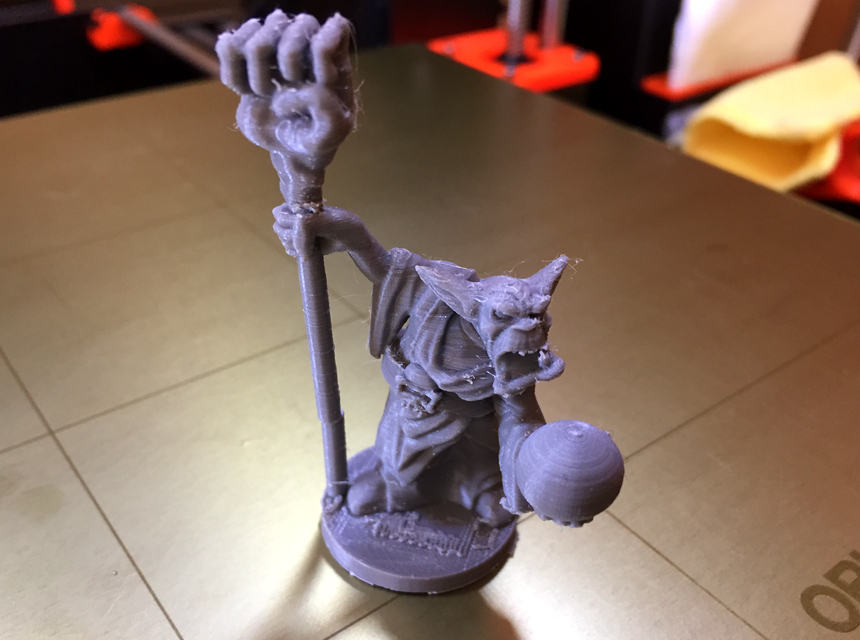
The printing volume will depend on the size of the build plate, also known as a printing bed or platform. This is a flat surface from where you build your model. It is made from metal, plastic or glass. Printing volume will determine the number of items you can print at once, or the largest model size your 3D machine can print. Please note that the dimensions of print area listed by manufacturers do not indicate the optimal print size, but the maximum allowable print dimensions. This means that the model will lose some detail and resolution if you print it at the maximum size.
Generally, filament printers such as Creality CR-10 have a larger bed size and print volume. It has printing volume of 11.8 x 11.8 x 15.75 inches compared to the resin printing Anycubic Photon S with volume of 4.5 x 2.5 x 6.4 inches.
The standard guarantee for 3D printers for minis is a limited warranty of one year for the unit. This does not cover the touchscreen user interface, FEP films, or the tool kits.
We have reviewed the best cheap 3D printer for miniatures that connect to USB and Wi-Fi for easy transference of files over Ethernet. Some come with spacious built-in memory for extra storage.
This includes sample resin and filaments to start you off, tool kit for quick assembly, integrated software that may require to be upgraded for efficient operation, resume printing function after power outage, microSD card, USB cable, power cord, and assisted leveling function.
The National Institute for Occupational Safety and Health (NIOSH) recommends Trusted Source 3D Printing Safety at Work | NIOSH | CDC 3D printing, or additive manufacturing, is increasing in popularity. This technology is becoming less expensive and more accessible to both businesses and consumers. It is currently used in a wide variety of settings, such as labs, factories, hospitals, schools, libraries, and homes. www.cdc.gov using gloves and safety glasses when operating 3D printers. They also advise running the printer in an enclosure in a well-ventilated environment to trap chemical emissions.
ELEGOO Saturn MSLA comes with a 8.9-inch 4K monochrome LCD which has high resolution, a dual linear Z-axis and image blur technology for greater accuracy and precision, and shock absorbers at the base. The upgraded version is also faster and quieter.
The Anycubic Photon Mono 2 is a user friendly and affordable 3D printer that is supplied with a variety of accessories and attachments, so you can get started straight out of the box. Even 3D printing novices should find this model easy to use with a clear LCD screen that’s simple to navigate.
Monoprice MP Cadet ranked among our top best 3D printers for miniatures because it includes several accessories and is quite affordable for beginners. The model is compatible with PLA and ABS filaments. It has high maximum extruder temperature and layer resolution range of 0.05 to 0.3 mm.
